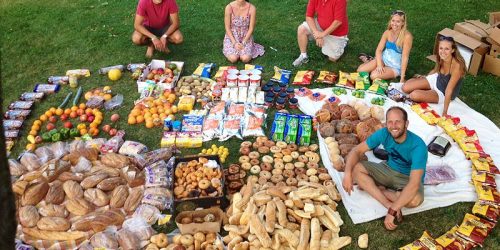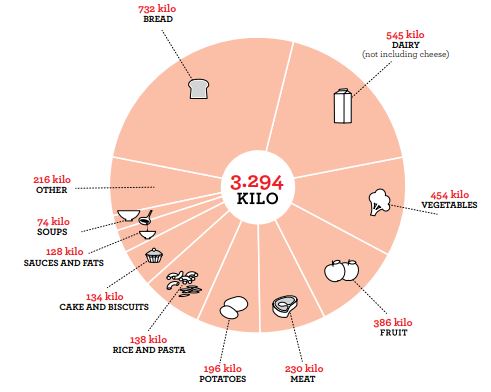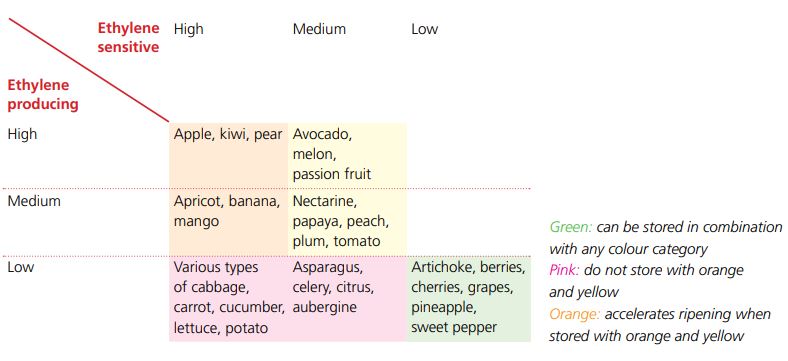The supply chain creates waste and every stage, and consumers contribute the most in developed countries. In the Netherlands consumers make up 33% of food waste; In the United States, 40-50 per cent of food is thrown away. This is around 76 billion pounds of food per year. Consumers need to find solutions and awareness on how they can change their behaviour to reduce the environmental burden.
What is the environmental impact?
The environmental burden of food thrown further down the supply chain is higher than the initial stages as energy has already been used up in processing, transport, packaging and preparation. Globally, the cost of food waste in a year is about 28% arable land, 500kg of CO2 and 250km3 of water per person. Red meat, milk and dairy products, vegetables and rice have high environmental costs if wasted. For instance, producing rice needs 660 gallons of water per pound produced.
Which groups tend to waste more food at home?
On average families with young children under the age of four tend to waste the most food. The list then follows with young professionals below the age of 25 and single-person households in the US and the EU. For each house, there are different contributing factors which determine the level of waste ranging from the level of income, those who plan their meals waste less than those who plan daily. Mismanaged kitchens and pantries can lead to overshopping and waste which is around 15-30kgs more.
The ten most wasted products, excluding beverages during one person’s lifetime. (Source: Netherlands Nutritional Centre)
What you can do at home:
People are aware that they are wasting food, unfortunately, they do not have a concrete plan or understand the repercussions of the environmental impact and food insecurity if they are not directly affected. Specific causes of household food waste and possible solutions are as follows.
Measuring through your “instincts.”
The main reason people throw away food is that they prepare too much. Not using a measuring cup or cooking the whole packet will lead to incorrect quantities—for instance, rice and pasta are cooked at incorrect quantities. Brands and products do have the recommended serving size and measurements on the packaging. In conclusion, it will be useful to have measuring cups and food scales to prevent making too much food.
You misunderstand the expiry dates.
On the packaging, there are two types of expiry dates: the best-before and the use-by date. Misperception and lack of knowledge on the labels are a significant cause of food waste. Products with an expired best-before date ensure that the quality is guaranteed and if consumed after is possible with you less likely to get sick. An expired use-by date is vital for food safety and should be disposed of immediately to prevent falling ill.
Incorrect fridge and freezer setting
Freezing and refrigerating food is useful for extending their use and shelf-life. Food fit for freezing are bread, meat and leftovers, using bags, trays and stickers are helpful to identify what to should eat next. To maintain shelf-life; store dairy, cooked meat and vegetables at 4 °C in the refrigerator.
Are you storing your food correctly?
Storage methods play an essential role. Incorrect storage can lead to the loss of vitamins in food from moisture loss and the breakdown of vitamin C if exposed to heat, light and oxygen. Certain fruits and vegetables if stored in the same compartment can spoil quicker from ethylene gas exposure.
Fruit and vegetables that produce and are sensitive to ethylene (Source: Watkins et al, 2012)
Portion sizes
At supermarkets, consumers prefer deals and promos which are available in bulk. It is primarily up to the supermarkets and producers to make changes on the packaging sizes. Switch to shopping at local farmers markets where you can buy per weight and obtain the right quantity. Always make a shopping list, plan meals and check the pantry beforehand.
References:
Watkins, C.B. and J.F. Nock, Production Guide for Storage of Organic Fruits and Vegetables, 2012, Cornell University: Cornell, USA. p. 67.









